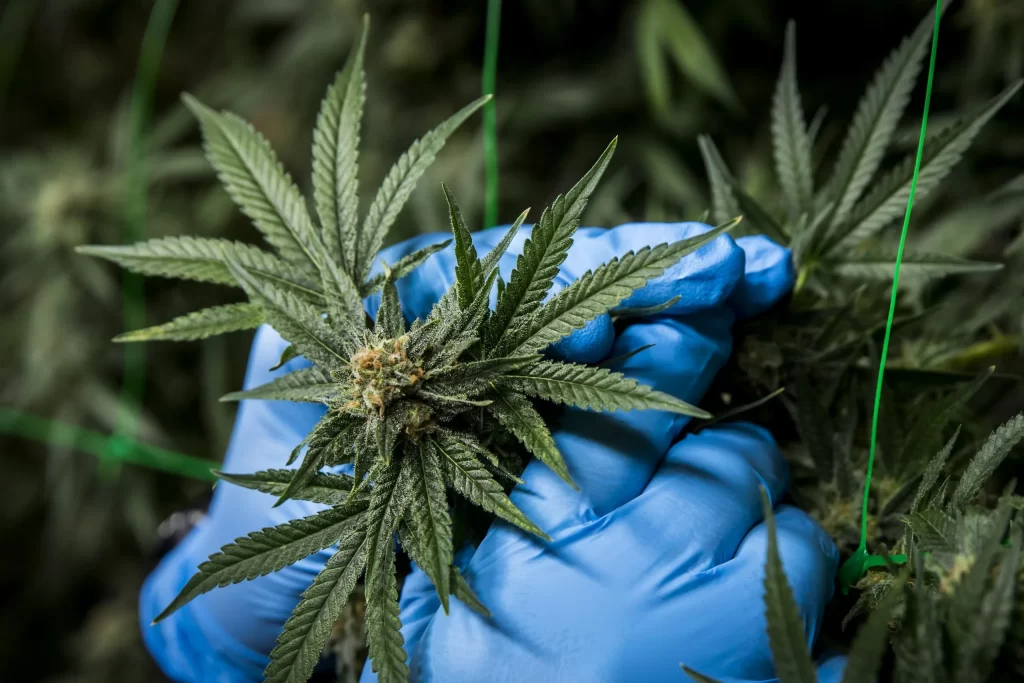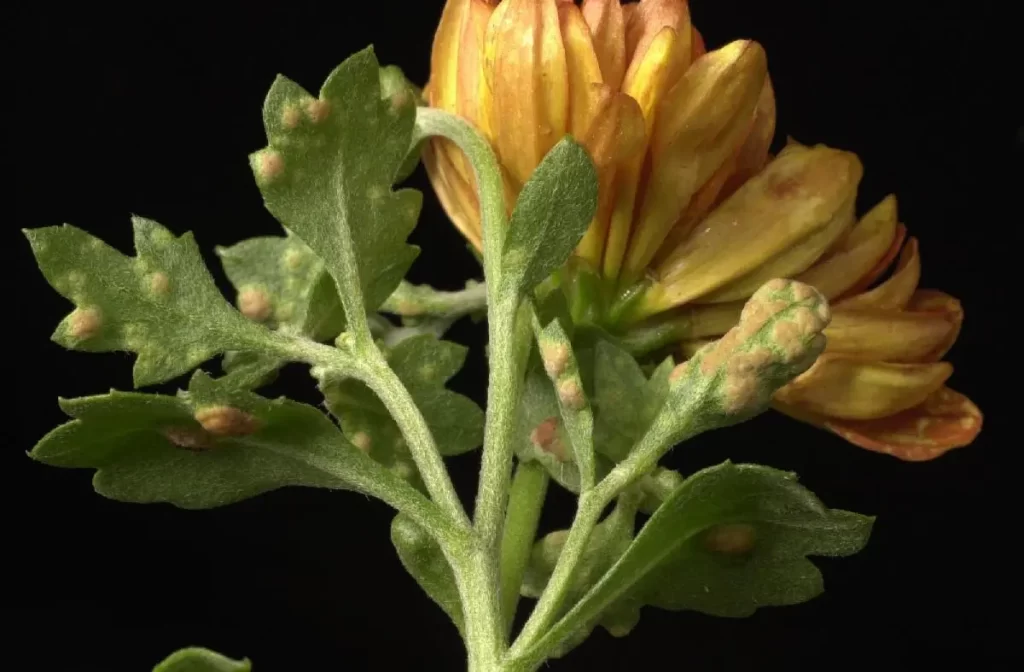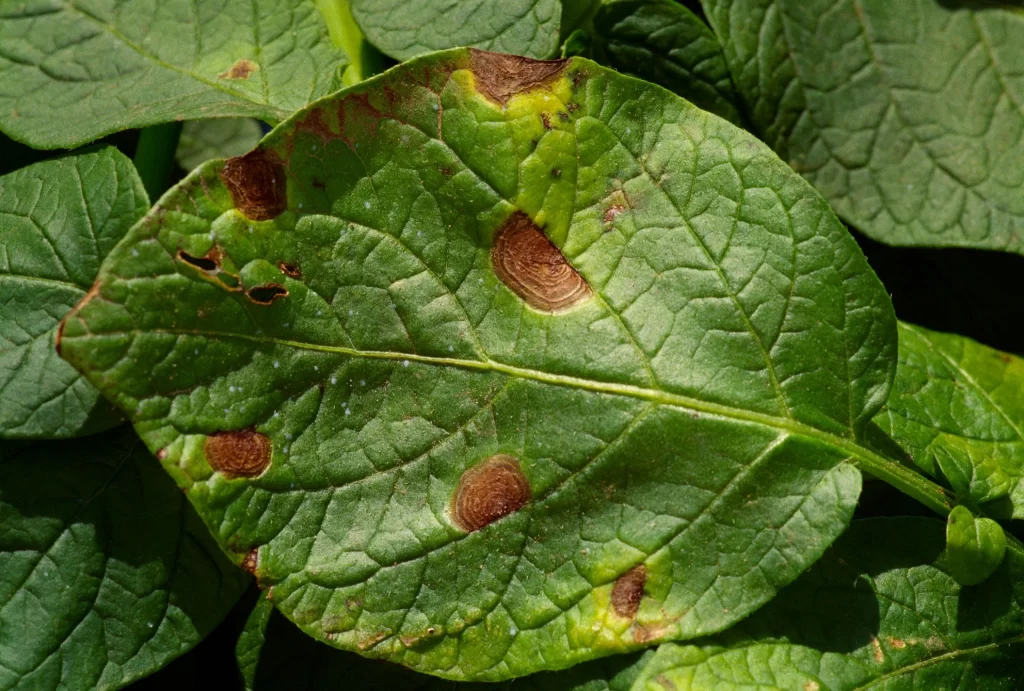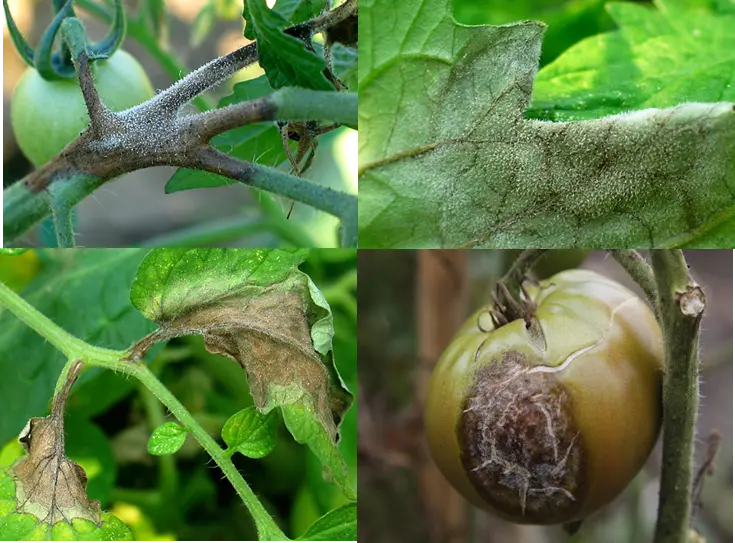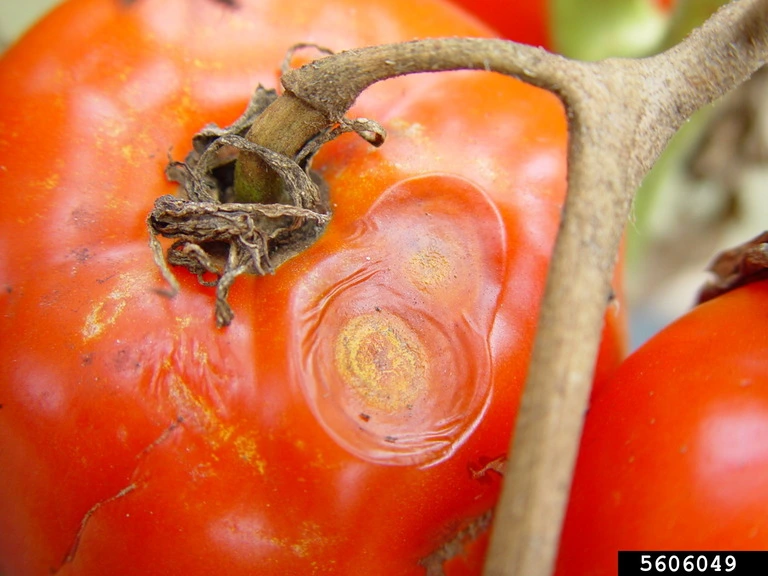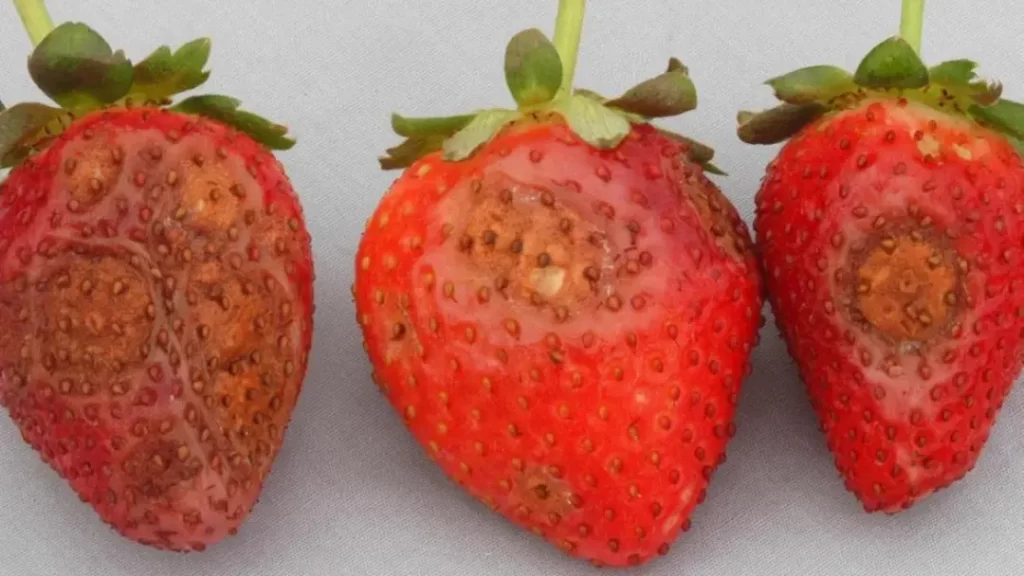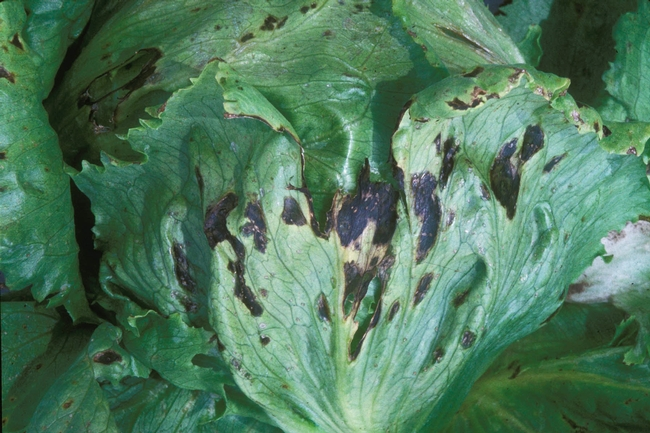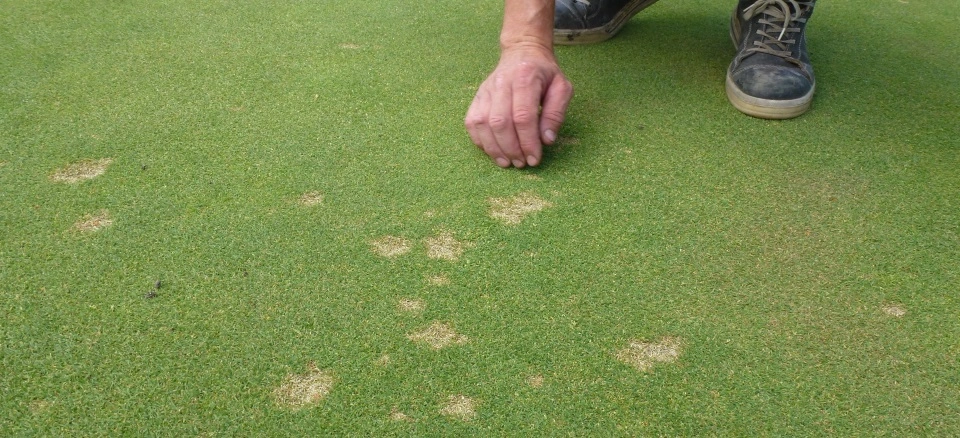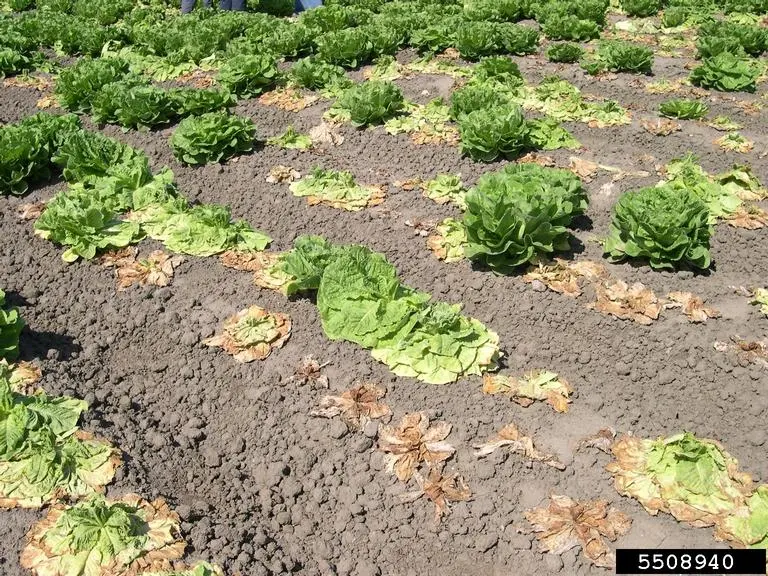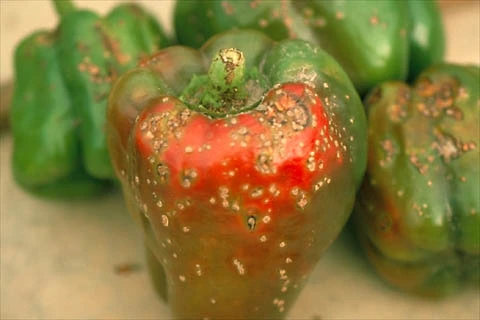Hop Latent Viroid Introduction Hop Latent Viroid (HLVd or HpLVd) is a significant concern for growers, particularly those cultivating hops and cannabis. This pathogen can have a considerable economic impact on the industry, leading to reduced yield, quality, and plant longevity[1-2]. A comprehensive economic study has summarized the economic impacts of diseases on specialty crops, […]
Puccinia horiana Introduction: A fungal threat to floricultural crops This week, Healthy Hydroponics is shifting focus to cover a fungal pathogen, Puccinia horiana, commonly known as chrysanthemum white rust, that is known to affect chrysanthemum plants and daisies [1]. Belonging to the order Pucciniales, this pathogen poses a significant threat to the global chrysanthemum industry […]
Alternaria solani Introduction Alternaria solani is a fungal pathogen that causes early blight in tomato and potato plants, leading to significant yield reductions if left uncontrolled [1]. This disease is particularly relevant for greenhouse growers and crop consultants, as it can thrive in warm and humid conditions. The economic impact of Alternaria solani is considerable, […]
Phytophthora infestans Introduction Phytophthora infestans, commonly known as late blight, is a notorious pathogen that poses a significant threat to tomato crops worldwide. This devastating oomycete (a “fungus-like” organism) has gained infamy for causing widespread and destructive outbreaks, leading to substantial economic losses and jeopardizing global food security [1]. This pathogen is best known for […]
Colletotrichum gloeosporioides Introduction Colletotrichum gloeosporioides is a widespread and destructive fungal pathogen responsible for anthracnose disease in various fruit, vegetable, and ornamental plants. It has a wide range of hosts and is considered to be one of the top ten most economically important fungal pathogens (1). It poses a significant threat to both indoor and […]
Colletotrichum acutatum Introduction Colletotrichum acutatum is a fungal pathogen that causes anthracnose in strawberries [1]. Anthracnose describes several fungal diseases affecting various plants, from fruits to grass to trees [2,3]. Colletotrichum acutatum and fellow relatives, Colletotrichum fragariae and Colletotrichum gloeosporioides, can lead to substantial crop losses and economic impact for growers [4,5]. Even though soil-grown […]
Xanthomonas hortorum pv. vitians Introduction Xanthomonas hortorum pv. vitians is a bacterial pathogen responsible for bacterial leaf spot in lettuce and other leafy vegetables; this pathogen poses a significant challenge to growers worldwide [1]. Bacterial leaf spot can lead to substantial crop yield losses and severe economic consequences. Historically, outbreaks can cause up to 100% […]
Clarireedia spp. What is Clarireedia spp.? Our guest writer Jessica O’Hanlon, from Earth Microbial, is very familiar with the fungus Clarireedia spp. With golf season approaching for the northern areas, and at the request of our readers, we invited her to write this blog about this grass pathogen. It causes a common turfgrass disease known […]
Sclerotinia minor What is Sclerotinia minor? Sclerotinia minor is a fungal pathogen affecting a wide variety of plants, most notably soybean, lettuce, canola, peanuts, and sunflowers [1–3]. Sclerotinia species, such as Sclerotinia sclerotiorum and Sclerotinia trifoliorum, are responsible for Sclerotinia rots or white moulds, which are of concern to farmers [4]. The infection causes massive […]
Xanthomonas euvesicatoria What is Xanthomonas euvesicatoria? Xanthomonas euvesicatoria is a bacterium that causes bacterial spot disease in plants of tomatoes and peppers [1,2]. It is aerobic and has a long tail (flagellum), allowing it to move in water. Please refer to Figure 1 where the flagellum can be seen on the bottom right side of […]


